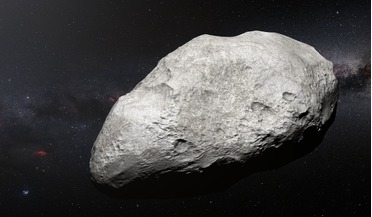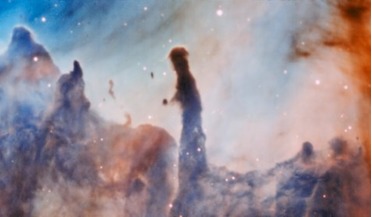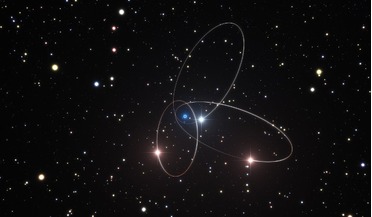 19 May 2021
Scientists unexpectedly find heavy metal vapour in comets throughout our Solar System, and beyond
19 May 2021
Scientists unexpectedly find heavy metal vapour in comets throughout our Solar System, and beyond
...(become gaseous) at low temperatures. However, in a new study by a Belgian team using the European Southern Observatory’s Very Large Telescope (ESO’s VLT), the data has shown traces of iron and nickel in the atmospheres of comets at distances of more...
 11 March 2020
Ultra-hot exoplanet literally rains iron say astronomers
11 March 2020
Ultra-hot exoplanet literally rains iron say astronomers
...-dispersion spectroscopy – the study of the absorption and emission of light and other radiation by matter – using ESO’s Very Large Telescope (VLT). The authors, whose work was just published in Nature and was led by David Ehrenreich at Observatoire...
 17 January 2018
First inactive stellar-mass black hole found in a globular cluster
17 January 2018
First inactive stellar-mass black hole found in a globular cluster
... found in a globular cluster, that has such a very low mass. Globular star clusters are among the oldest ...While observing the cluster with ESO’s MUSE instrument on the Very Large Telescope in Chile, astronomers noticed that one particular star that is...
 09 May 2018
First confirmed carbon-rich asteroid found in Kuiper Belt
09 May 2018
First confirmed carbon-rich asteroid found in Kuiper Belt
... so far away from the Sun. The discovery of 2004 EW95, made by an international team of astronomers using ESO’s Very Large Telescope, helps strengthen theories about the dynamical evolution of the Solar System that describes how the planets...
 03 November 2016
MUSE instrument produces spectacular new images of the Carina Nebula
03 November 2016
MUSE instrument produces spectacular new images of the Carina Nebula
...considerable effect on their surroundings, as they tend to blast out large quantities of ionising radiation. However, observing this effect has been ... look dense in the images, they are actually very diffuse, and it is possible that the radiation and...
 09 August 2017
Stars orbiting Sgr A* hint at relativistic effects
09 August 2017
Stars orbiting Sgr A* hint at relativistic effects
...with the help of S2 again and observations from ESO’s Very Large Telescope (VLT), a team of German and Czech astronomers have ...and it is expected to soon reveal general relativistic effects very clearly. It will also allow astronomers to look for ...